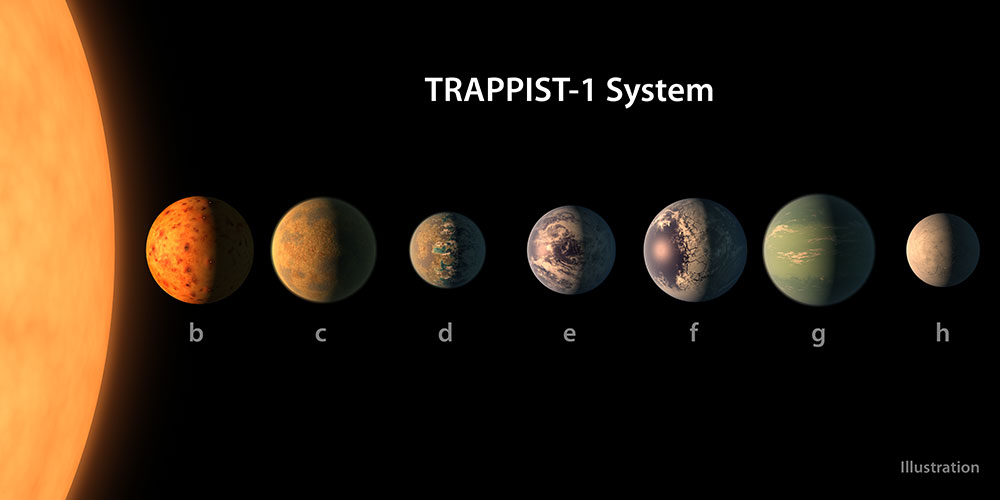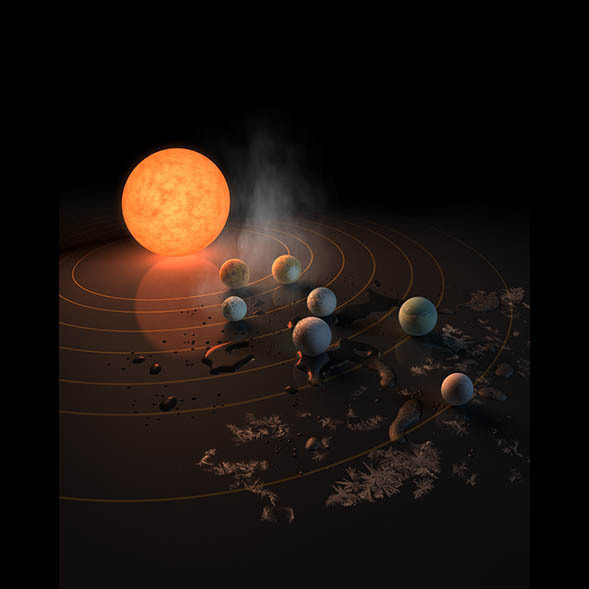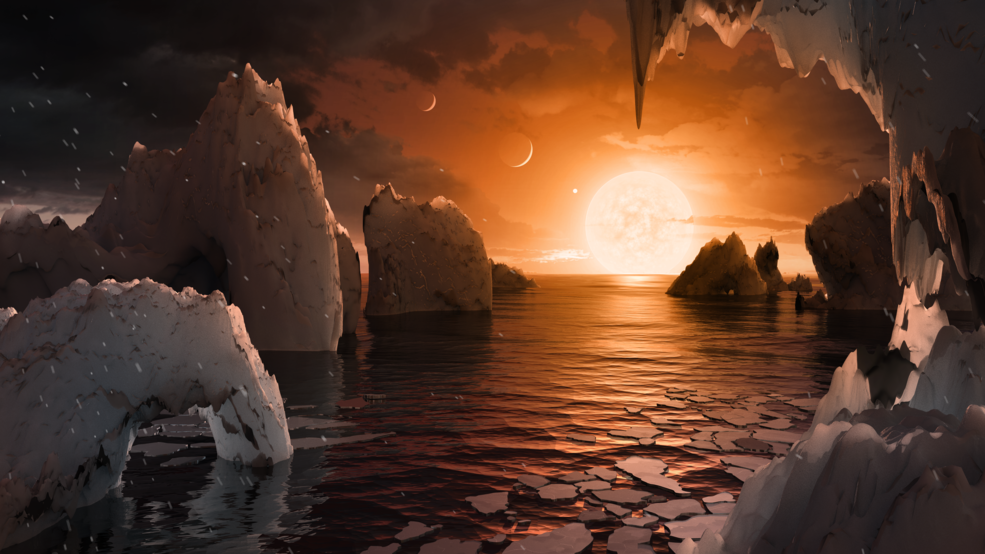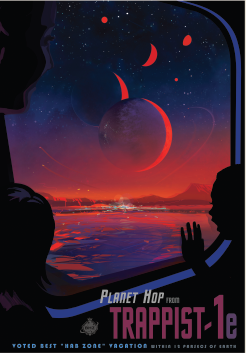4 Coolest Things About NASA’s New Discovery
February 22, 2017 Category: Pop Culture
Click here to see Execulink’s Home Internet options
It is seriously one of the coolest times to be alive. Today, NASA’s Spitzer Telescope revealed a monumental, ground-breaking discovery: the existence of seven Earth-sized planets orbiting around a single star.
Orbiting around an “ultra-cool dwarf star” that is smaller than Jupiter, these exoplanets exist in what’s commonly called the “Goldilocks zone”. That is, they exist in a fairly unique bit of space that’s not too cold, not too hot, but just right to be potentially habitable and most likely to have liquid water (aka Earth-like). Three out of the seven planets have the highest potential for liquid water, and the other four might too, depending on their atmospheric conditions.
So this system of exoplanets (and by that I just mean any planets that don’t exist in our solar system), is called TRAPPIST-1, named after The Transiting Planets and Planetesimals Small Telescope in Chile. In May 2016, TRAPPIST announced they had discovered three planets in the system. Then, NASA’s Spitzer Space Telescope confirmed the existence of two of them and actually found five additional ones which were published today.
As if this entire discovery wasn’t cool enough, there are some pretty neat things to mention about these particular exoplanets.
They are all REALLY close together. If a person was on one planet, they could potentially see geological features or clouds of neighbouring worlds, which would sometimes be larger than our moon. Can you imagine looking up and seeing the clouds of Venus and then nearby, the rings of Saturn? How cool!
Credits: NASA/JPL-Caltech
Half day, half night worlds. These planets are all tidally locked to their star, which means that the same side of the planet is always facing the star. Therefore, each side is either in perpetual day or perpetual night. The ramifications of that kind of boldly contrasting environment are mind-blowing. I wonder what kinds of creatures would live in the dark half, and which live in the light? Star Wars fans would have a field day there.
It’s Pretty Close To Us. If you were travelling at light speed (670 million miles per hour), it’s a mere 39 years from Earth. That sounds pretty far, but it’s actually relatively close to us in space-terms. Hop, skip and a jump really!
The Art. I just love how when these events happen, NASA provides really cool art and tools that really get across the impact and emotional response of these findings. I’ve included a lot of them in this post, but the retro-looking one below (of which there are many more you can print out and hang on your wall), is probably my favourite!
If you want to take your space exploration to the next level but don’t see yourself becoming an astronaut any time soon, check out this free desktop app from NASA. Using the “Eyes on Exoplanets” program, you can zoom to the outer reaches of our universe and explore new worlds, including TRAPPIST-1.
Until the next mind-blowing space discovery, happy exploring and keep looking up at those stars!







